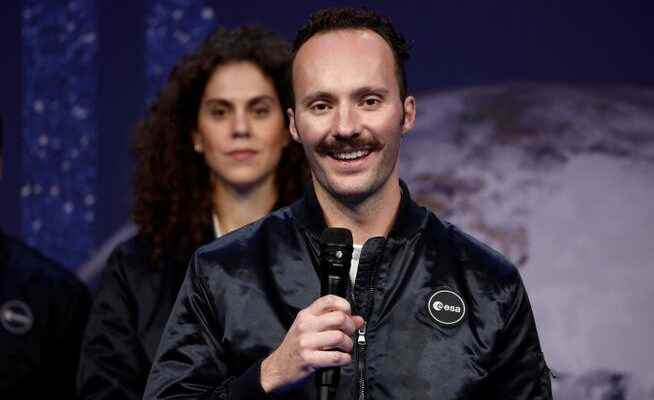The European Space Agency Esa will start the new course for astronauts next spring. Of 22,500 applicants, 17 made it into the class.
The Swiss Marco Sieber is a doctor with a flair for technology and space.
As a child, Marco Sieber from Burgdorf made rockets with his brother. He owned books about space, it fascinated him. The dream of space accompanies him to this day. That says Sieber, now 33 years old, in a video from the European Space Agency (ESA).
Now Marco Sieber can fulfill this dream. ESA has selected him along with 16 other candidates for the next course as an astronaut. On Wednesday she introduced the new students in Paris. In the prepared video, Sieber humbly looks out from under his mustache. That he was selected for this training, what will now come to him: All this is “incredible and exciting”.
Only the second Swiss in space
It is indeed a special event as ESA had not recruited any new astronauts since 2008. 22,500 applicants entered the race for the new course. After a year and a half of selection, the class is now complete. His choice is also special in the Swiss context. After Claude Nicollier from Vaud, Sieber could become only the second Swiss to fly into space.
Basic training will start next spring at ESA’s European Astronaut Center. It lasts twelve months and is intended to prepare Sieber for missions to the International Space Station and beyond. The new astronaut class includes professional astronauts and members of the reserve. Sieber is one of the five professional astronauts.
Urologist and skydiver
In his youth, the dream of space had temporarily receded into the background, says Sieber. He graduated from high school in Burgdorf, studied medicine in Bern, wrote a doctoral thesis on robot-assisted surgery and passed the best final exam of his year. During his medical career he worked in emergency rooms, anesthesia and urology.
But there was more besides. The dream of heaven pushed through. In his free time, he enjoys paragliding, piloting small airplanes and jumping out of them with a parachute. He had learned that in the military, for which he worked as chief physician at Swisscoy in Kosovo. He also worked once as an emergency doctor for helicopter rescues. At some point he realized that as a European you could also become an astronaut.
Meet ESA’s class of 2022 astronauts ? #ESAastro2022 pic.twitter.com/P77q35qXCZ
— ESA (@esa) November 23, 2022
Diversity in the ESA
When the ESA advertised the new course last year, it also set itself the goal of more diversity. Professional background, age, skin color, origin or gender – regardless of this, she wanted to support aspirants. The ESA specifically addressed women. There are now eight women in the new class of 17, including the Germans Amelie Schönenwald (biologist) and Nicola Winter (mechanical, aeronautical and space engineer) and the Austrian Camen Possnang (doctor).
The Brit John McFall will play a special role. He is the first person with a physical disability to undergo astronaut training. McFall, 41, is a surgeon. At the age of 19 he lost his right leg in a motorcycle accident. However, he learned to run again and became a successful sprinter. He won bronze in the 100 meters at the 2008 Beijing Paralympics. McFall is now part of a feasibility study that aims to research the work and life of people with disabilities in space.
